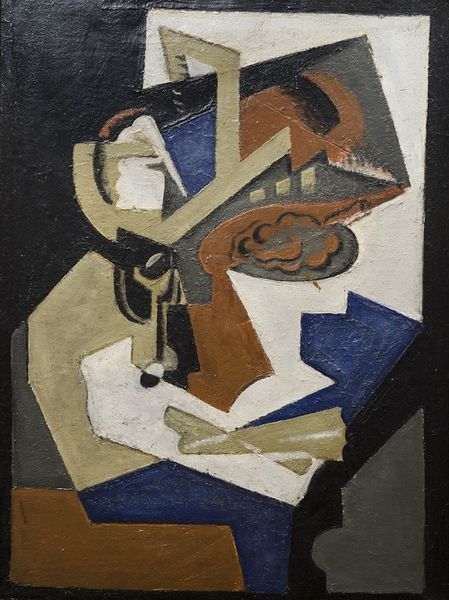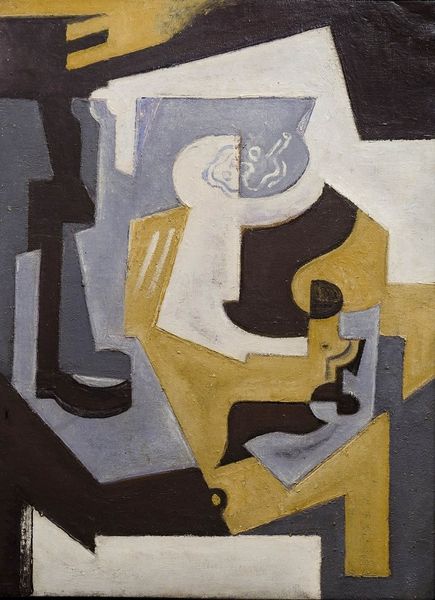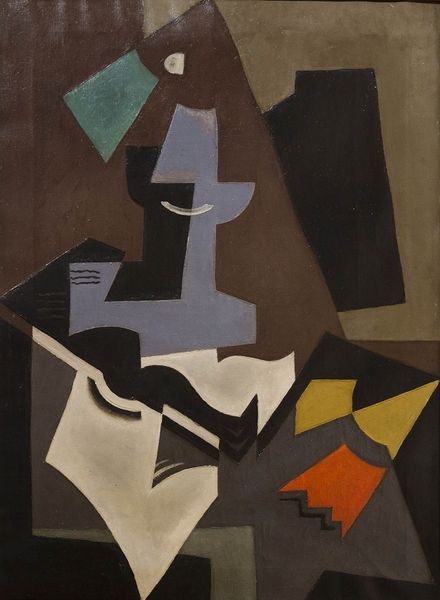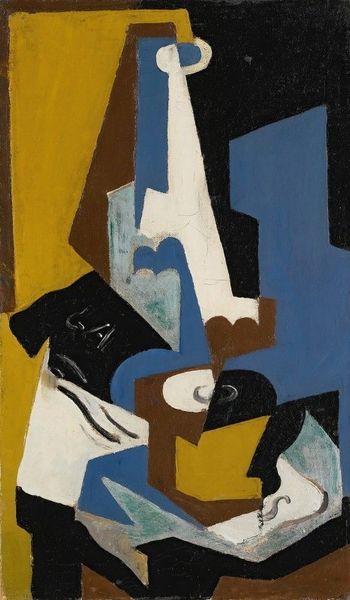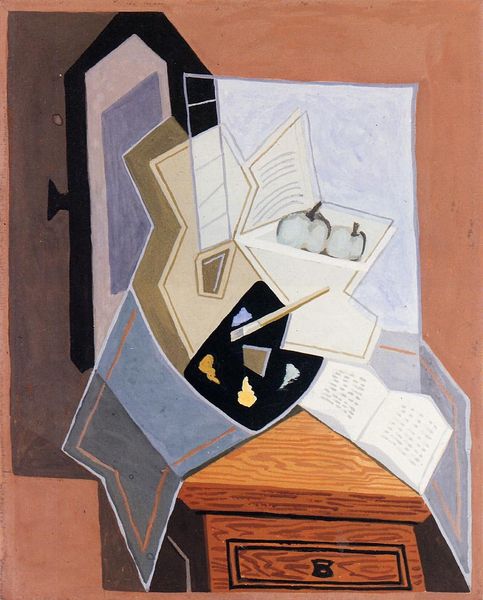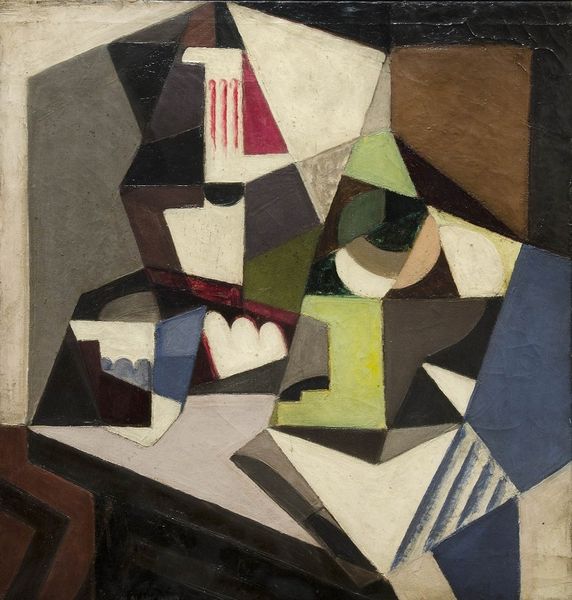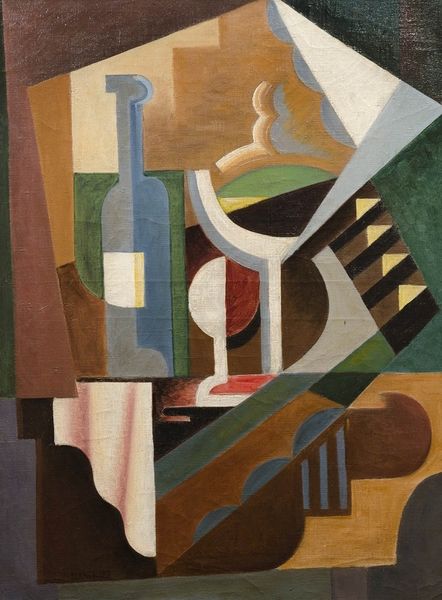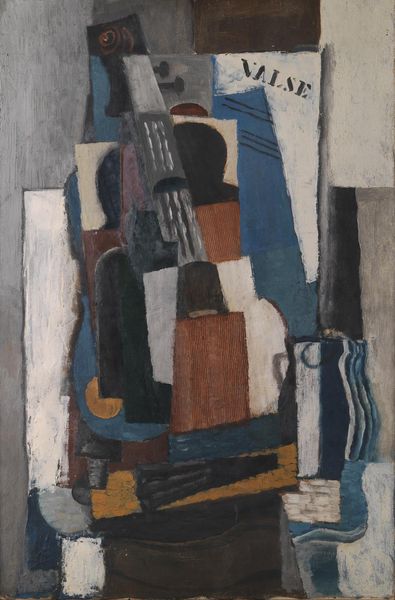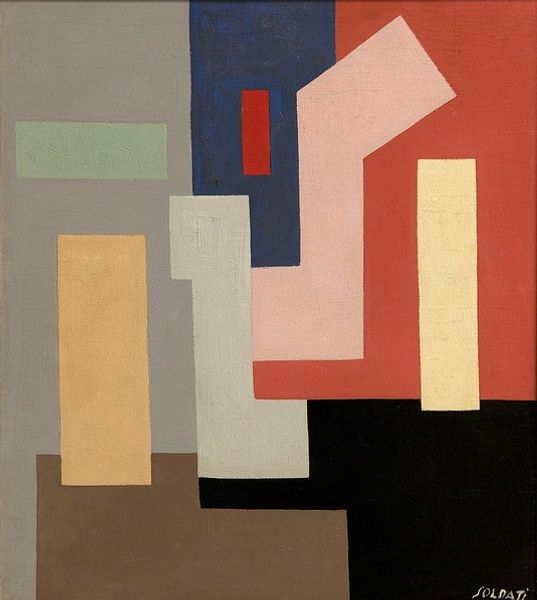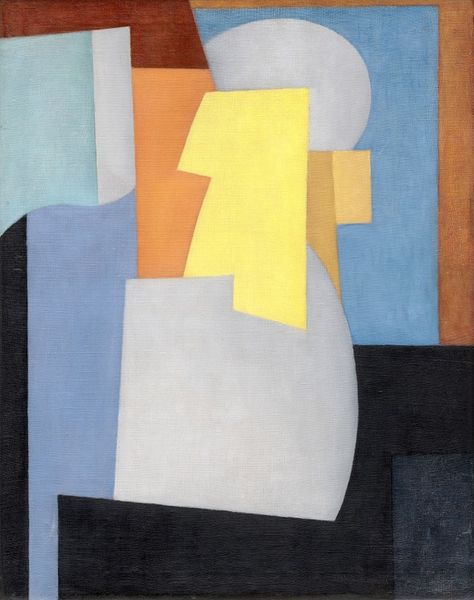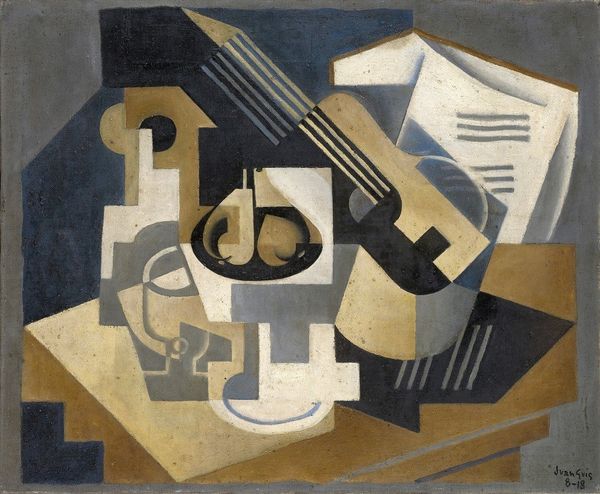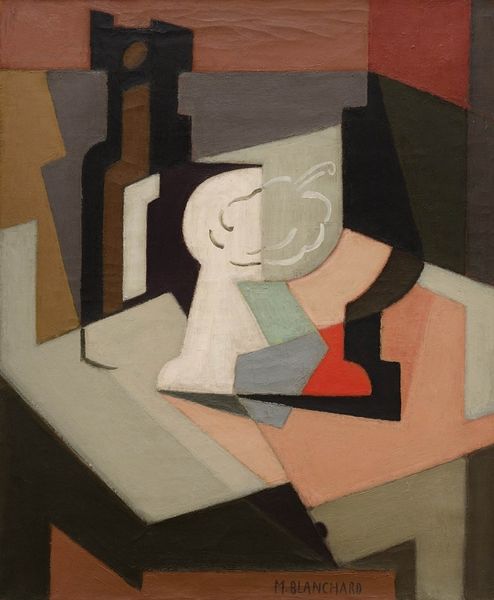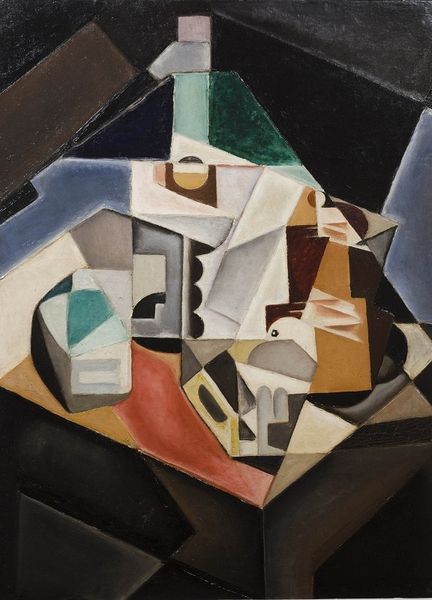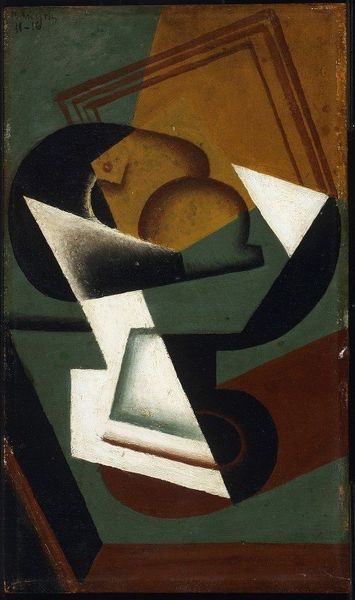
painting, oil-paint
#
cubism
#
painting
#
oil-paint
#
oil painting
#
geometric
Copyright: Public domain
Curator: This is "Composición Cubista Con Botella" by María Blanchard, created in 1918. It’s an oil painting, very much entrenched in the Cubist style. Editor: It's striking, almost austere in its muted palette of browns, blues, and whites. The composition, all these geometric forms, has a very definite structure—angular, almost architectural. Curator: Considering its historical context, painted at the tail end of the First World War, Blanchard, as a disabled woman and an artist working within a heavily male-dominated arena like Cubism, presents a radical perspective. This stillness, this constructed reality, reflects the socio-political fragmentation of that era. Editor: Yes, the fragmented forms can speak to a world in disarray, but observe how the artist uses light and shadow. Notice the interplay between positive and negative space; this is far more than simple representation; it's visual semantics. A semiotic deconstruction reveals meaning in the relationships between these shapes and colors. Curator: But Blanchard’s experiences as a queer woman of color are equally vital to interpreting the canvas. Her personal history informs a nuanced reading that transcends mere aesthetics. These are not just shapes. They are expressions of a lived, intersectional experience. Editor: And yet, consider the objecthood of it all! A bottle, a glass – reduced to essential forms, inviting contemplation of what remains when representation shifts towards abstraction. Look how she dismantles volume into planes! Curator: I view that deconstruction, that abstraction, as intrinsically linked to Blanchard's broader existence. Her choice of rendering reveals her dismantling the existing power structure in art as she challenges traditional gendered norms in her cultural context. Editor: Perhaps. I'm seeing a brilliant orchestration of form, where each precise placement is deliberate—leading our eye through a calculated interplay of surfaces. We can analyze her intention with this deliberate, spatial puzzle, almost scientific in approach. Curator: I’d say this piece serves as a window into a very specific moment and worldview—one of resilience, resistance, and artistic innovation at the height of Cubism, crafted by a woman who overcame monumental social barriers. Editor: Regardless of the narrative you impose, one cannot deny that Blanchard demonstrates incredible understanding of Cubist formalism and masterful rendering within its vocabulary.
Comments
No comments
Be the first to comment and join the conversation on the ultimate creative platform.
